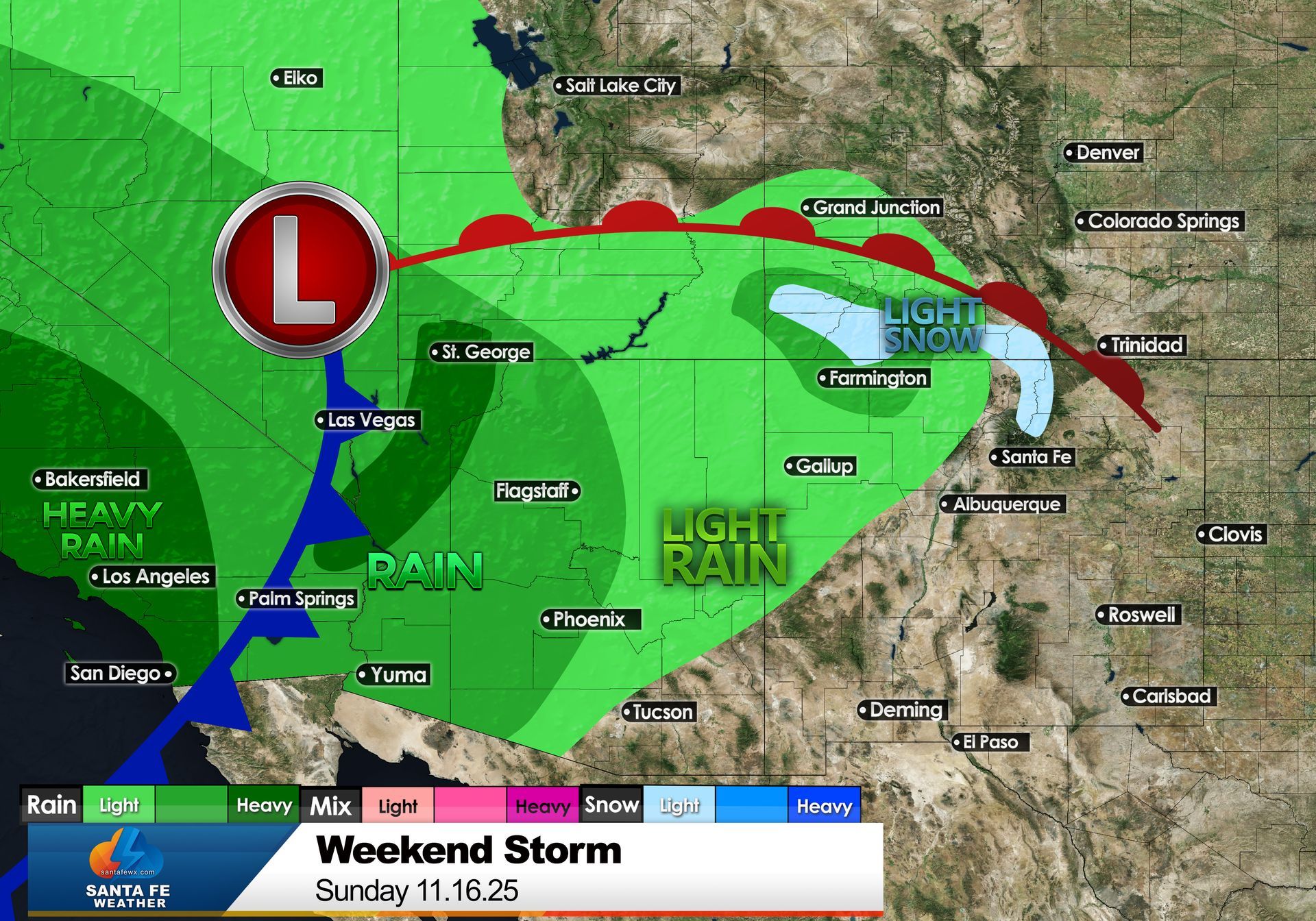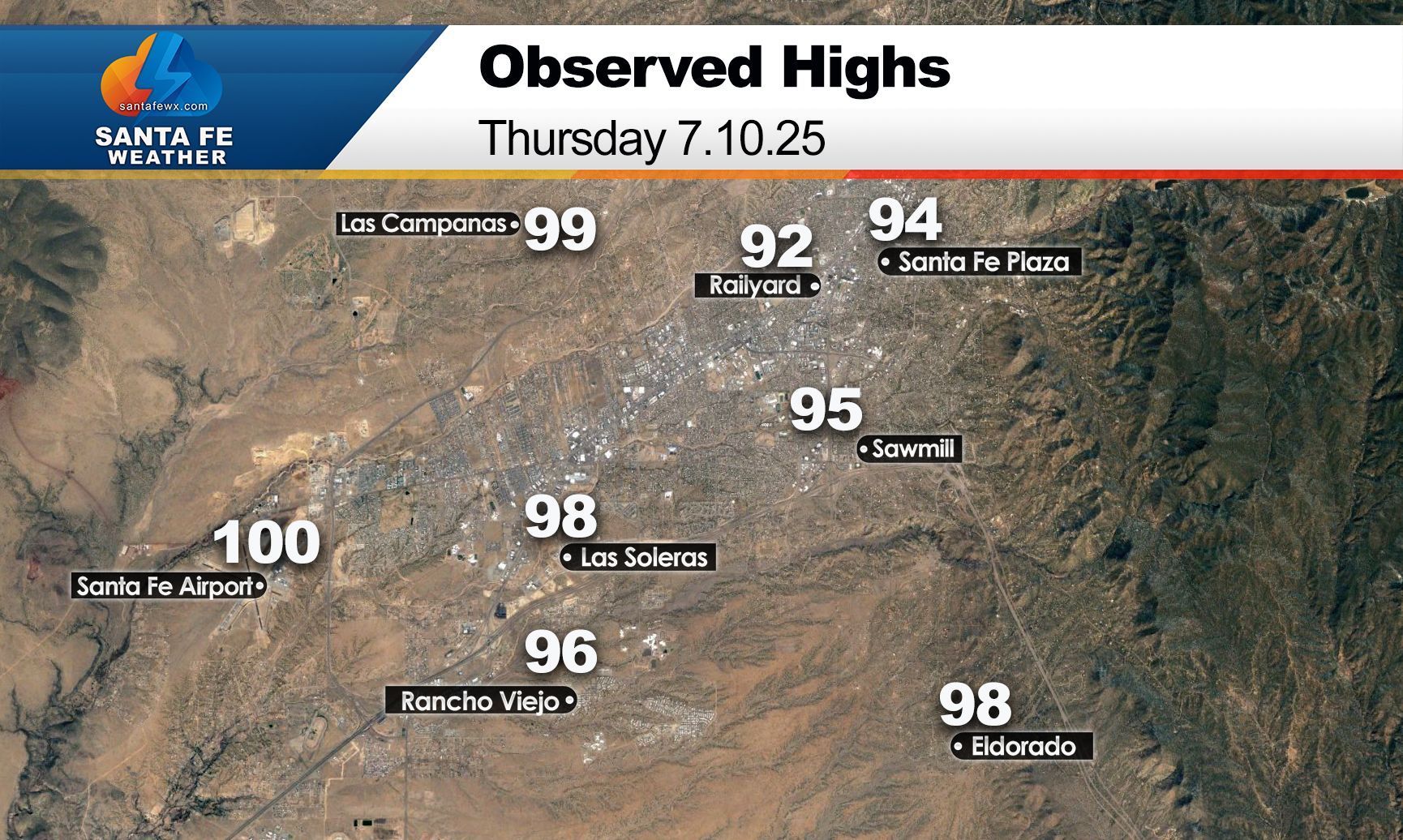A dust devil is a small, rotating column of air that picks up dust, sand, and debris as it spins across the ground.
Whirling Wonders of the Desert: Dust Devils
May 17, 2025
By Jay Faught
If you’ve spent any time in Santa Fe or the surrounding high desert, chances are you’ve spotted one of nature’s most mischievous little windstorms spinning its way across a dirt road, a construction site, or an open field. These swirling columns of dust and debris are called dust devils, and while they might look like mini-tornadoes, their origin and behavior are quite different—and fascinating.
What Exactly Is a Dust Devil?
A dust devil is a small, rotating column of air that picks up dust, sand, and debris as it spins across the ground. Unlike tornadoes, which are born from powerful thunderstorms and can be dangerous, dust devils form on clear, sunny days—and most are harmless. They typically last only a few seconds to a few minutes and are rarely more than a few dozen feet wide, though some can grow taller than a three-story building.
How Do They Form?
Dust devils form when strong surface heating creates an unstable atmosphere close to the ground. Here’s a step-by-step breakdown:
- The ground gets hot—especially in areas with little vegetation, like the arid landscapes around Santa Fe.
- The hot surface heats the air directly above it, creating a pocket of warm, low-density air.
- This warm air rises quickly through the cooler air above it, creating a small updraft.
- If there’s a slight horizontal wind or uneven heating of the ground, this rising air can start to rotate.
- As the spinning column pulls in more air, it picks up dust and debris, making the vortex visible.
Santa Fe’s high elevation, strong sun, dry soil, and wide-open spaces make it an ideal place for these whirlwinds to form—especially on spring and summer afternoons when the ground heats up quickly under the clear New Mexico sky.
Dust Devils vs. Tornadoes: What’s the Difference?
It’s easy to confuse a dust devil with a tornado at first glance, but the differences are significant:
- Dust devils form from the ground up on sunny days; tornadoes form from the sky down during thunderstorms.
- Dust devils are usually harmless, while tornadoes can be devastating.
- Tornadoes are part of a much larger storm system, while dust devils are localized phenomena.
Where Are Dust Devils Most Common?
Dust devils are most commonly found in desert and semi-arid regions around the world, including the American Southwest, northern Africa, Australia, and parts of Mars (yes—Mars!). In the U.S., they’re especially common in Arizona, New Mexico, Nevada, and parts of Texas and California.
Here in Santa Fe, they’re often spotted:
- In empty dirt lots or parking areas on the south side of town
- On the open stretches of the Turquoise Trail or U.S. 285
- Near construction sites where the soil has been disturbed
- Even in some backyards, especially if there’s loose dirt and strong sunshine
Santa Fe Weather

Updated Storm Track for Weekend Storm November 14, 2025 By Jay Faught The storm system we’ve been watching all week has shifted—but this time, it’s slowing down and taking a more northerly route. That updated path dramatically changes the weekend forecast for Santa Fe and northern New Mexico. A Slower, More Northern Storm Track Earlier projections had the storm sweeping into New Mexico sooner, with a more organized band of moisture. But the latest data shows the system digging more slowly along the West Coast and pushing a bit farther north than originally expected. That shift means Southern California will now take the brunt of the storm, with periods of heavy rain and even flooding concerns in some areas. For us in Santa Fe, however, the impacts will be much more limited. Santa Fe’s Updated Forecast: Light and Late Instead of showers developing Saturday or early Sunday, the latest timing suggests isolated light rain showers won’t arrive until Sunday night. The moisture feed simply doesn’t extend far enough south to bring widespread precipitation to our area. Here’s what that means for your weekend plans: Most of the weekend stays dry—great news if you're planning outdoor activities around town or on the trails. Isolated showers Sunday night may bring brief dampness but nothing widespread or soaking. Snow Levels: Staying High There will be just enough moisture and lift Sunday night into early Monday for a few flakes in the higher terrain: Light snow is possible above 9,000 feet, mainly over the highest peaks of the Sangre de Cristo Mountains. Accumulations look minimal, and ski areas won’t see major impacts, though the first hints of winter are always exciting. Valleys, including Santa Fe, will stay warm enough for just light rain if anything at all. Bottom Line While this storm is impressive for the West Coast, its slower and more northern track means Santa Fe will see only minor impacts—mostly a few isolated showers Sunday night and perhaps a dusting of snow high in the mountains. A bigger takeaway: this pattern shift still hints at an active atmosphere as we move deeper into November. It’s a good reminder that our storm season is just getting started.










